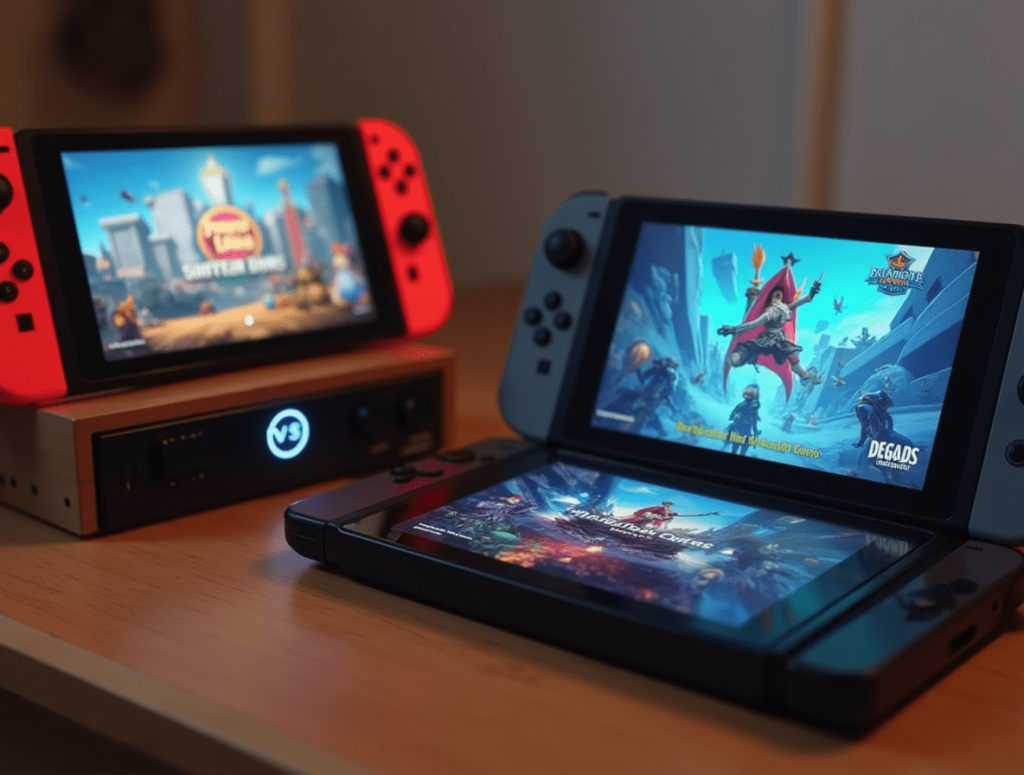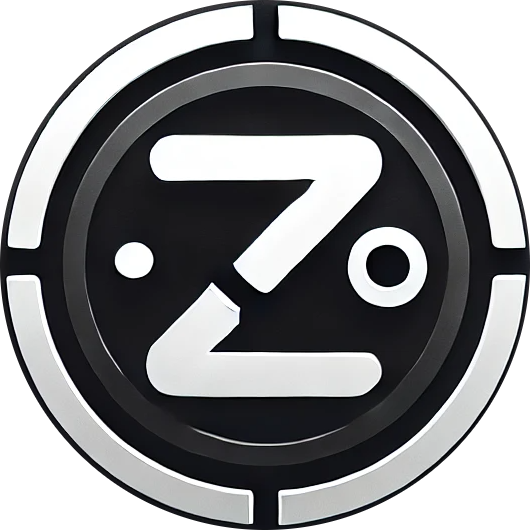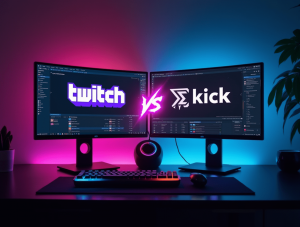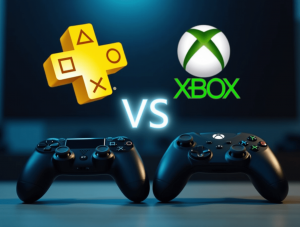
Nintendo Switch vs Steam Deck: The Ultimate Handheld Gaming Comparison
Handheld gaming has undergone a remarkable transformation in recent years. No longer limited to simple games with basic graphics, today’s portable consoles deliver experiences that rival traditional home gaming systems. The Nintendo Switch and Valve’s Steam Deck represent the pinnacle of this evolution, each offering distinct approaches to on-the-go gaming.
For many gamers, choosing between these two powerhouse handhelds presents a genuine dilemma. Do you opt for Nintendo’s hybrid console with its exclusive first-party titles, or Valve’s PC gaming portable with its vast Steam library? This comparison breaks down everything you need to know to make an informed decision based on what matters most to you.
Hardware and Performance: Raw Power vs Efficient Design
Processing Capabilities
The Steam Deck and Nintendo Switch represent fundamentally different approaches to portable hardware:
Steam Deck packs substantially more processing power with:
- Custom AMD APU with 4-core/8-thread Zen 2 CPU
- RDNA 2 GPU with 8 compute units
- 16GB of unified LPDDR5 RAM
- Options for 64GB eMMC or 256/512GB NVMe SSD storage
Nintendo Switch (OLED model) features:
- NVIDIA Custom Tegra processor
- 4GB of LPDDR4 RAM
- 64GB of internal storage
- MicroSD expansion slot
This hardware difference isn’t just about specifications on paper – it translates directly to gaming performance. The Steam Deck can run many modern PC games at medium to high settings, often targeting 30-60 fps at its native 1280×800 resolution. The Switch, designed with efficiency rather than raw power in mind, runs games at 720p in handheld mode (docked mode allows for 1080p output to TVs).
Display Quality
Both devices offer high-quality displays with different strengths:
Steam Deck features:
- 7-inch IPS LCD touchscreen
- 1280×800 resolution (16:10 aspect ratio)
- 60Hz refresh rate
- Anti-glare etched glass on premium model
Nintendo Switch OLED offers:
- 7-inch OLED touchscreen
- 1280×720 resolution
- Vibrant colors with perfect blacks
- Enhanced visibility in various lighting conditions
The Switch OLED’s display provides more vibrant colors and deeper blacks, which particularly enhances games with colorful art styles. The Steam Deck’s slightly higher resolution and anti-glare option make it better suited for text-heavy games and outdoor use.
Battery Life
Portable gaming is only as good as your battery lasts:
Steam Deck battery performance:
- 2-8 hours depending on game demands
- More graphically intensive games drain battery faster
- Power settings can be adjusted to extend battery life
Nintendo Switch battery life:
- 4.5-9 hours (OLED and revised standard models)
- 2.5-6.5 hours (original model)
- More consistent across different games
The Switch typically offers more predictable battery life, while the Steam Deck’s endurance varies significantly based on which games you’re playing and your chosen settings.
Game Libraries: Exclusives vs Vast Collection
Available Games
The game libraries for these devices differ dramatically in both size and content:
Steam Deck can access:
- Over 50,000 Steam games (with varying levels of compatibility)
- Thousands verified as “Steam Deck Compatible” or “Playable”
- PC gaming back-catalog spanning decades
- Ability to install non-Steam games and emulators
Nintendo Switch offers:
- Over 4,000 games on Nintendo eShop
- Nintendo’s exclusive franchises (Mario, Zelda, Pokémon, etc.)
- Strong indie game support
- Selected third-party AAA titles (often with technical compromises)
Exclusive Titles
Nintendo’s strength has always been its exclusive franchises:
Switch exclusives include:
- The Legend of Zelda: Breath of the Wild and Tears of the Kingdom
- Super Mario Odyssey
- Animal Crossing: New Horizons
- Pokémon Scarlet/Violet
- Metroid Dread
- Mario Kart 8 Deluxe
Steam Deck doesn’t have true “exclusives” but offers:
- Access to PC-only games like Baldur’s Gate 3
- Strategy and simulation genres rarely available on consoles
- Early access titles and PC gaming’s experimental indie scene
- Mod support for compatible games
Game Pricing and Availability
How you acquire and pay for games differs significantly:
Steam Deck benefits from:
- Frequent deep discounts on Steam (seasonal sales often offer 50-90% off)
- Free-to-play titles
- One-time purchases with no subscription required for online play
- Game sharing through Family Library Sharing
Nintendo Switch offers:
- Nintendo first-party titles that rarely see significant discounts
- Nintendo Switch Online subscription required for online play ($20/year basic, $50/year for Expansion Pack)
- Access to classic NES, SNES, N64, and Game Boy titles through subscription
User Experience: Simplicity vs Flexibility
Ease of Use
The devices take different approaches to user experience:
Nintendo Switch emphasizes:
- Plug-and-play simplicity
- Intuitive interface designed for gaming
- Quick suspend/resume functionality
- Seamless transition between handheld and docked modes
Steam Deck provides:
- Desktop mode for full PC functionality
- More complex but highly customizable interface
- Multiple control and performance options per game
- Steeper learning curve for non-PC gamers
Control Options
Both devices offer versatile control methods:
Steam Deck features:
- Dual trackpads and touch screen for mouse input
- Analog sticks, D-pad, and face buttons
- Four back buttons for additional inputs
- Gyro aiming support
- Virtual keyboard and touchscreen
Nintendo Switch includes:
- Detachable Joy-Con controllers
- Motion controls and HD rumble
- Tabletop mode with separated controllers
- Compatibility with Pro Controller for traditional gameplay
Portability and Design
How the consoles function as portable devices:
Nintendo Switch advantages:
- Lighter weight (OLED: 420g with Joy-Cons attached)
- Detachable controllers for tabletop play
- Official dock included for TV play
- More kid-friendly design
Steam Deck considerations:
- Heavier build (669g)
- Ergonomic grip design for adult hands
- Official dock sold separately
- Larger physical footprint
Value and Ecosystem: Closed Garden vs Open Platform
Price Comparison
Initial investment varies between platforms:
Nintendo Switch pricing:
- OLED Model: $349.99
- Standard Model: $299.99
- Lite (handheld only): $199.99
Steam Deck pricing:
- 64GB (eMMC): $399
- 256GB (NVMe SSD): $529
- 512GB (NVMe SSD with anti-glare): $649
Additional Costs
Beyond the initial purchase:
Nintendo Switch ecosystem:
- Games typically $40-60, first-party titles rarely drop below $40
- Online subscription required for multiplayer ($20-50/year)
- Limited backward compatibility (requires subscription for retro games)
Steam Deck ecosystem:
- Games frequently discounted, many titles under $20
- No subscription required for online play
- Backward compatibility with your existing Steam library
Expandability and Future-Proofing
How these devices can grow with your needs:
Steam Deck offers:
- MicroSD card expansion
- User-replaceable SSD in some models
- USB-C dock compatibility for monitors, keyboards, etc.
- Potential for future software updates to improve performance
Nintendo Switch provides:
- MicroSD card expansion
- Officially supported dock and accessories
- Established track record of long software support
Who Should Buy Each Console?
Steam Deck is Better For:
- PC gamers who already have a Steam library
- Players who value graphical fidelity and performance
- Those who enjoy tinkering with settings and modifications
- Gamers interested in strategy, simulation, or western RPGs
- People looking for the most affordable game library over time
Nintendo Switch is Better For:
- Fans of Nintendo’s exclusive franchises
- Casual or family gamers
- Those who prioritize simplicity and ease of use
- Players who value local multiplayer and party games
- Gamers who prefer lighter weight for extended portable sessions
Conclusion
The “better” handheld ultimately depends on your specific gaming preferences and needs. The Nintendo Switch excels through its exclusive games, hybrid functionality, and intuitive design. The Steam Deck stands out with its raw power, vast game library, and flexibility as a portable PC.
For many players, the decision comes down to games: if you can’t live without Mario, Zelda, and Pokémon, the Switch is your only option. If you prefer the breadth of PC gaming with thousands of titles spanning decades, including genres rarely seen on consoles, the Steam Deck delivers that library in a portable format.
Both represent remarkable achievements in handheld gaming technology, proving that portable gaming no longer requires significant compromises over home consoles or PCs.
FAQ Section
Can the Steam Deck play Nintendo Switch games?
No, the Steam Deck cannot natively play Nintendo Switch games. The Steam Deck runs a Linux-based operating system and plays PC games from Steam and other compatible stores.
Does the Steam Deck connect to a TV like the Switch?
Yes, the Steam Deck can connect to external displays using its USB-C port and either an adapter or the official dock (sold separately). However, the process isn’t as streamlined as the Switch’s drop-in dock system.
Which has better battery life for long trips?
The Nintendo Switch typically offers more consistent battery life (4.5-9 hours for newer models). The Steam Deck’s battery life varies significantly based on which games you play and settings you choose, ranging from 2-8 hours.
Can I use my existing game collection on either device?
If you already own Steam games, they’ll be available on your Steam Deck (with varying compatibility). The Nintendo Switch requires purchasing games specifically for the Switch platform, even if you owned them on previous Nintendo consoles.
Which is better for children?
The Nintendo Switch is generally more child-friendly with its simplified interface, robust parental controls, and library of family-oriented games. The Steam Deck’s PC-based system has a steeper learning curve and provides access to a broader range of mature content.














